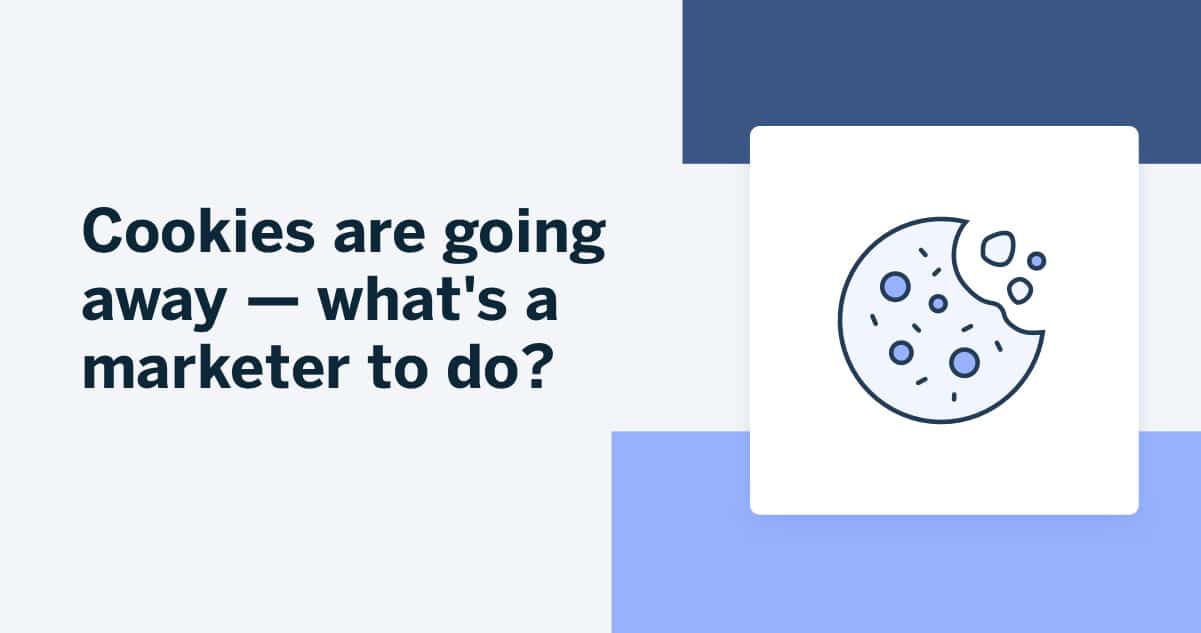As a marketer, you’ve likely heard about the seismic shift coming in the world of data tracking. In July, 2022, Google made a big splash by announcing that they’d be phasing out cookies by the summer of 2023. For marketers who rely on third-party cookies, this understandably led to a lot of concern and consternation. But what if this presents an important opportunity?
First, the what: First-party cookies are created by the websites you visit to store things relating to improving and simplifying your use of those websites. These include preferences, login detail, browsing history, and shopping baskets. Third-party cookies are those that can be created and seen by multiple websites, not just the site you’re on. They are often used for tracking and advertising purposes.
Google plans to phase out support for third-party cookies in its Chrome browser, as part of an industry-wide shift towards more privacy-friendly practices. This falls in line with regulatory changes and a growing consumer demand for greater transparency and control over their personal data. While this is not the first privacy-related change to impact web advertising, Google’s proposed changes are particularly significant given its wide reach and dominance in the market.
What Comes after Cookies?
It’s a myth to think that if third-party cookies go away, marketers will have to operate in the dark. In fact, the shift away from third-party cookies presents a real opportunity for brands to develop a closer, more meaningful relationship with customers and prospects. Consumers are more eager than ever to share their information. They are more willing than ever to download an app or follow your brand on social media, provided that the invitation is extended in a way that feels meaningful and adds value to their experience.
Most brands are already doing some version of this. When we as marketers ask customers for an email address in exchange for a 20% off coupon for their first purchase, we are being clear and transparent about what we’re doing with that data. Moving forward into a cookieless future simply requires a shift in thinking. The rules for marketers boil down to: tell people what data you’re going to collect, what you’re going to do with it, and give people a choice.
Studies, such as the Data and Marketing Association’s Consumer Email Tracker 2021 have shown that consumers want a balance between convenience and privacy. On one hand, they want access to personalized and relevant services, content, and advertisements. On the other hand, they also want to have control over their personal information and to have their privacy protected. They want more choice and transparency.
Overall, consumers want to have a say in how their information is used and feel confident that their privacy is being respected.
We at Emarsys have a bit of an advantage over some of our competitors in that our DNA is based in Europe. We’ve got the highest standards of privacy in the world and so we have grown experienced in helping our customers navigate this changing landscape for some time.
What Does Good Data Collection Look Like? Transparent Information and Choice!
Customers can’t exercise control over their data unless there is transparency. At first impression it may seem that an evolution away from cookies is a daunting challenge for the marketer, but all that is needed is to apply the same transparency you use for email sign-up and preferences. Explicitly asking what your customers and prospects want to hear and see, instead of just inferring those answers from their behavior, is an excellent opportunity to build deeper relationships with customers and prospects, and allows them to control the conversation. Keep information simple and transparent, and give people the choice to say yes or no. You’re far more likely to obtain information that will be accurate, and your communications will be more welcome. It may require a bit more of a lift going in, but you’ll be rewarded with zero-party data that your customers are freely sharing because they want to hear what your brand has to say.
What About Prospect Marketing and New Customer Acquisition?
A question that’s on the top of many marketer’s minds is: without third-party tracking, how is a marketer supposed to perform web, social, or search targeting to drive people to your website? There’s no question that if you’ve been relying heavily on third-party tracking for your marketing efforts, it may require some effort to shift your focus. Let’s face it: advertising is changing. It’s true that marketing teams are more strapped for time and resources than ever, and it can be challenging for teams to embrace a “do more with less” philosophy or learn new ways of doing things in a short period of time. However, a shift to cultivating first-party data that your prospects readily give is a boon in the long term. It opens up the opportunity to be more creative with how you engage prospects and to learn which messages really drive the desired behavior, be it app download, social media interaction, or, ultimately, purchase.
See how Emarsys’s integration of omnichannel data helps make your interactions with customers more meaningful. Request a demo today.












